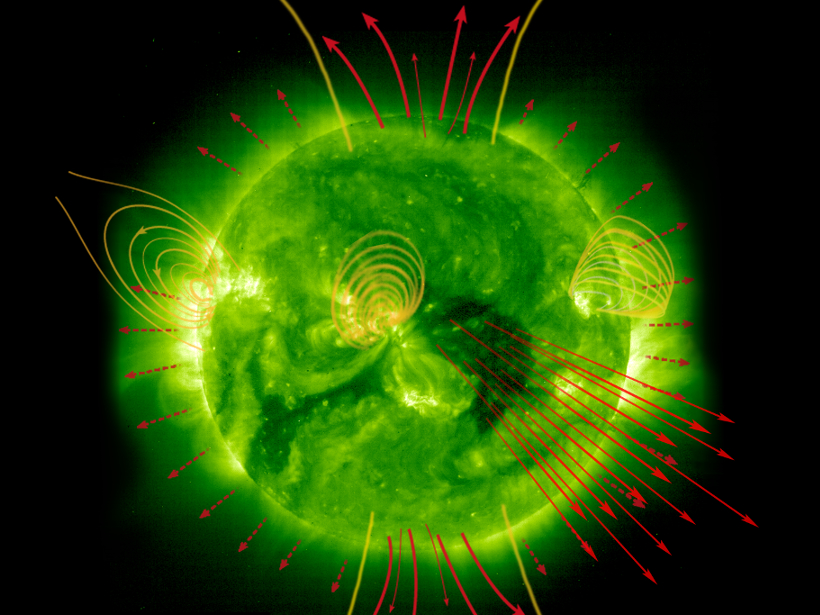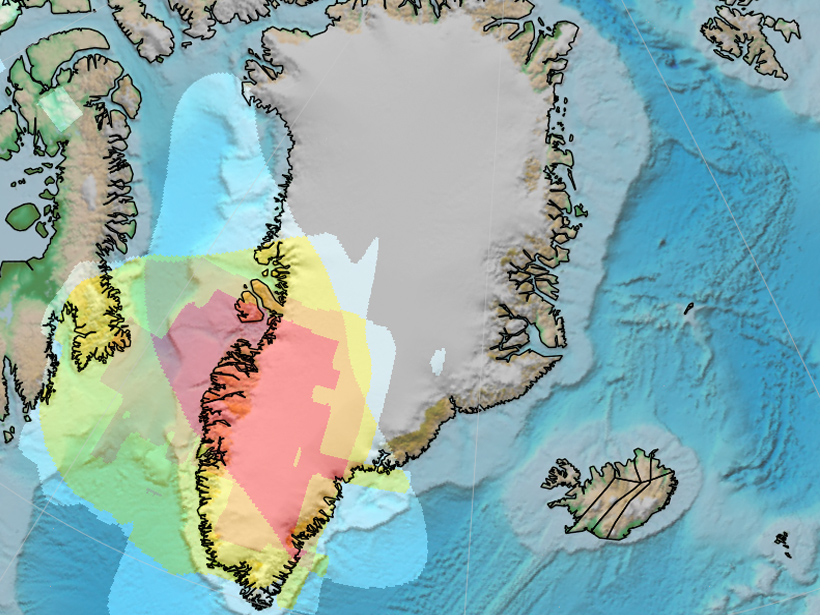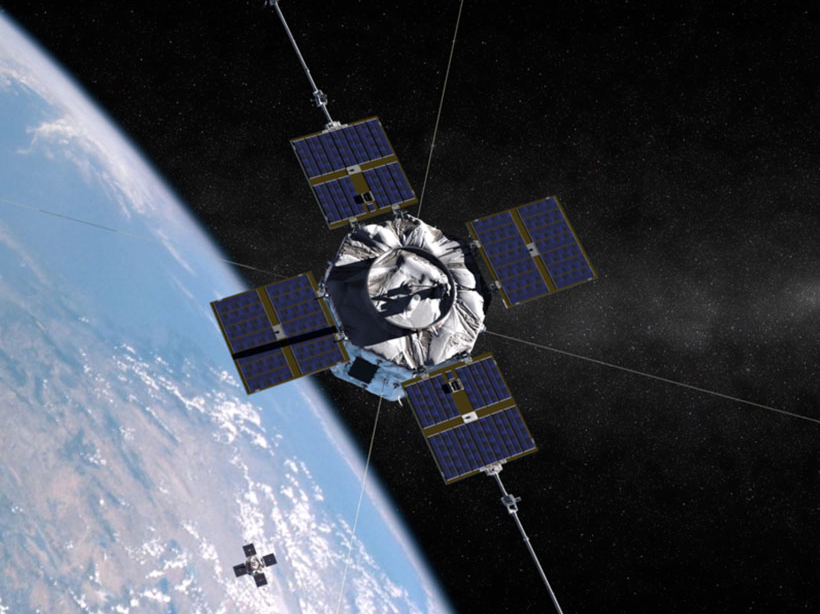A new version of the World Digital Magnetic Anomaly Map, released last summer, gives greater insight into the structure and history of Earth's crust and upper mantle.
magnetic fields & magnetism
Patches of Low Electron Density Help to Heat the Ionosphere
Simulations show how changes in electron density can trap electromagnetic waves and heat electrons in the ionosphere.
Chasing Down the Slow Solar Wind
The Sun's plasma blasts Earth’s magnetosphere at more than a million miles per hour. The fastest pours from holes in the corona, but until recently the source of the "slow" solar wind was a mystery.
Evidence of an Extinct Ocean Basin Detected Beneath Greenland
An analysis of a seismic and gravity anomaly discovered in the middle mantle sheds new light on ancient oceans, the mantle's evolution, and ancient magmatism in the Arctic.
Polarity Reversals in the Earth’s Magnetic Field
Studies of geomagnetic polarity reversals have generated some of the biggest and most interesting debates in the paleomagnetic and wider solid Earth geophysics communities over the last 25 years.
Electrons Thrown Off Course in Near-Earth Magnetic Reconnection
NASA Magnetospheric Multiscale (MMS) mission detects energy differences in electrons scattered by magnetic reconnection.
Exploring New Knowledge on Magnetospheric Interactions
AGU Chapman Conference on Magnetospheric Dynamics; Fairbanks, Alaska, 27 September to 2 October 2015
Radiation Belt Processes in a Declining Solar Cycle
The Van Allen Probes began an extended mission in November to advance understanding of Earth's radiation belts.
Great Mysteries of the Earth's Magnetotail
Workshop on Magnetotail Reconnection Onset and Dipolarization Fronts; Laurel, Maryland, 16–18 September 2015
Satellite Shows Earth's Magnetic Field Bent During a Solar Storm
When solar storms strike, they weaken Earth's defenses against harmful radiation. New satellite measurements reveal just how much.







